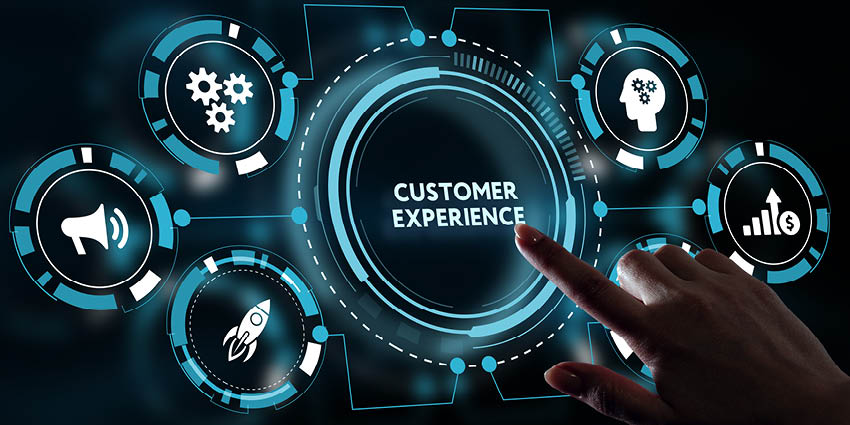What is Customer Experience (CX)? Its Importance for Retail Businesses

1. What is Customer Experience (CX)?
Customer Experience, also known as CX, refers to the overall experience a customer has during their buying journey, including direct or indirect interactions with a particular product, service, or brand. CX encompasses how a business interacts with customers at every point of their journey—from marketing to sales and customer service across all platforms. CX is not just a set of actions; it also focuses on emotions. How do your customers or potential customers feel about your brand? At every touchpoint, you can either improve—or destroy—their perception of your business. Therefore, critical decisions must be made at each touchpoint, and those decisions impact how successful your business will be. Simply put, customer experience is the result of interactions between the customer and the business, shaped by three key elements: the customer journey, the touchpoints of interaction, and the experience environment (including digital environments).
2. Importance for Retail Businesses
So why is customer experience so important? As products become more diversified, customers increasingly value their experiences with your business. They want to feel connected and comfortable when shopping with their favorite brands. Customers expect businesses to please them, care about their emotions, and show respect. CX has become a key competitive differentiator, so companies must ensure their strategies deliver personalized and satisfying interactions at every customer touchpoint.

2.1. Increase Customer Loyalty
The true advantage of CX lies in keeping customers satisfied so they continue doing business with you. Most of a company's revenue comes from existing customers. Marketing to them is also cheaper than acquiring new ones. Good CX not only retains existing customers but also leverages your reputation to attract new ones. On the other hand, poor experiences will inevitably drive customers away and severely damage brand trust and credibility in the market.
2.2. Customer Satisfaction as a Key Competitive Factor
CX has become a major differentiator across all industries. According to Conversocial’s 2021 Customer Experience Trends Report, 22% of customers value great experiences more than price. Salesforce also reported that over 50% of customers will switch to a competitor if their needs are not met. These statistics show that delivering strong CX is a top priority for businesses looking to stand out and gain a competitive edge.
2.3. Boosting Revenue
Like a proportional equation, the better the customer experience, the higher the annual revenue. Customers are willing to pay more if they feel emotionally cared for and receive good service. Returning customers attract new ones, and positive experiences amplify brand visibility through word-of-mouth. In an increasingly saturated and competitive market, CX presents the best opportunity to strengthen a company's position and achieve desired profits.
3. The Difference Between Customer Experience and Customer Service
Customer service and customer experience are often used interchangeably. They’re not synonyms, though they are related. Customer service is just one part of the overall customer journey, while CX encompasses all interactions between your brand and customers. Within this broader distinction, there are several ways to differentiate CX from customer service.

3.1. Level of Control
Businesses have full control over the services they provide. While they can shape CX, control is more limited due to the many factors influencing how customers perceive a brand.
3.2. Metrics
CSAT (Customer Satisfaction Score), CES (Customer Effort Score), and NPS (Net Promoter Score) help evaluate service quality. While they can reflect CX to some extent, evaluating CX also requires other indicators such as CLV (Customer Lifetime Value), churn rate, and customer retention rate.
3.3. Ownership
Customer service is mainly the responsibility of managers and support agents. Other team members may interact with customers, but the support team is accountable for resolving their issues. CX, however, is a shared responsibility across the organization. Everyone—from marketing to sales to product teams—is responsible for delivering the best customer experience at every touchpoint. These distinctions allow businesses to align customer service and CX to build stronger customer relationships.
4. 7 Negative Factors Affecting Experience Quality
It's important for businesses to recognize that not all customers care about the same things when interacting with a company. For example, some are willing to pay a premium for a better experience rather than settling for an equally good product with poor service. Therefore, businesses must reassess and improve weak points in their CX. Here are seven key negative factors:
- Excessive automation with no human interaction.
- Lack of regular direct customer feedback collection.
- Uninformed staff giving incorrect advice.
- Long wait times when resolving issues or complaints.
- Customer service agents not understanding customer needs, giving generic responses, and focusing only on products.
- Rude, unprofessional behavior and unclear communication from staff.
- Slow responses and inability to resolve customer concerns.
5. Enhancing CX and Measurement Indicators
5.1. Tips to Improve CX Quality
Providing positive experiences leads to benefits such as higher customer retention and stronger relationships. But how can businesses improve CX and make customers want to return?
Personalize Using a Customer Journey Map:
A Customer Journey Map visually presents the steps customers take to reach their goal with your business—whether making a purchase or using a service. It helps managers and staff better understand and perform their roles. With this map, businesses can uncover customer motivations, needs, and touchpoints, enabling them to optimize and personalize CX.
Improve Skills of Sales and Support Teams:
Much of CX depends on interactions with your business—especially with sales and support staff. Human factors play a vital role in shaping positive experiences. If employees lack proper tools or feel undervalued, it impacts their performance. Therefore, upskilling your sales and customer support teams is crucial to enhance customer experience.
Use Customer Feedback as a Development Tool:
CX is abstract and difficult to quantify. To evaluate if your strategies are effective, measurable tools are needed. CES, NPS, and CSAT are three essential metrics for any CX improvement campaign.
5.2. Key Measurement Indicators
Without measuring CX, there’s no way to optimize it. The three metrics below are used by over 3,500 companies to improve CX and boost sales:
- Customer Effort Score (CES): Measures how easy it is for customers to use your product or service on a 7-point scale from “Very Difficult” to “Very Easy.” It reflects the level of effort needed and likelihood of continued usage. Use this to simplify and enhance customer access.
- Net Promoter Score (NPS): Measures customer loyalty, including average product use duration, repeat purchases, multi-channel usage, participation in loyalty programs, order size, repeat orders, and return rates.
- Customer Satisfaction Score (CSAT): A common metric to assess customer satisfaction through surveys or implicit indicators like product ratings, delivery timeliness, or mystery shopping scores.
6. Conclusion
Customer experience plays a vital role in business success. A great CX strategy strengthens competitiveness, boosts customer satisfaction, loyalty, and advocacy, ultimately increasing retention and attracting new customers. Smart Solutions hopes this article has helped you better understand what CX is and why it matters to your business development. Source: Compiled
———————
Smart Solutions – Digital Transformation Ecosystem
Digital Transformation Division – GMO-Z.com RUNSYSTEM
Website: https://ssolutions.vn/
Facebook: https://www.facebook.com/ssolutions.dx
Hotline: 097 583 0096
Location: Hanoi – Hue – Da Nang – Ho Chi Minh City – Tokyo






